Solar Panel Installation: Step-by-Step Process for Homeowners
Introduction: Solar Panel Installation
With the increasing demand for renewable energy, solar panels could be an appealing option for those seeking to lessen their carbon footprint and reduce their electricity cost. Solar panels can seem daunting when you’re on the right route, but the procedure is easy and fun. Being the best solar panel company in Agra (Starfield Renewables. Ltd.), we are experts in providing help to homeowners throughout the installation of solar panels.
Solar Panel Installation Process
Installing solar panels on your property is a big investment; however, it can also provide many benefits, including electricity independence, lower energy bills, and environmental sustainability. The following steps will guide you through the entire solar panel installation process:
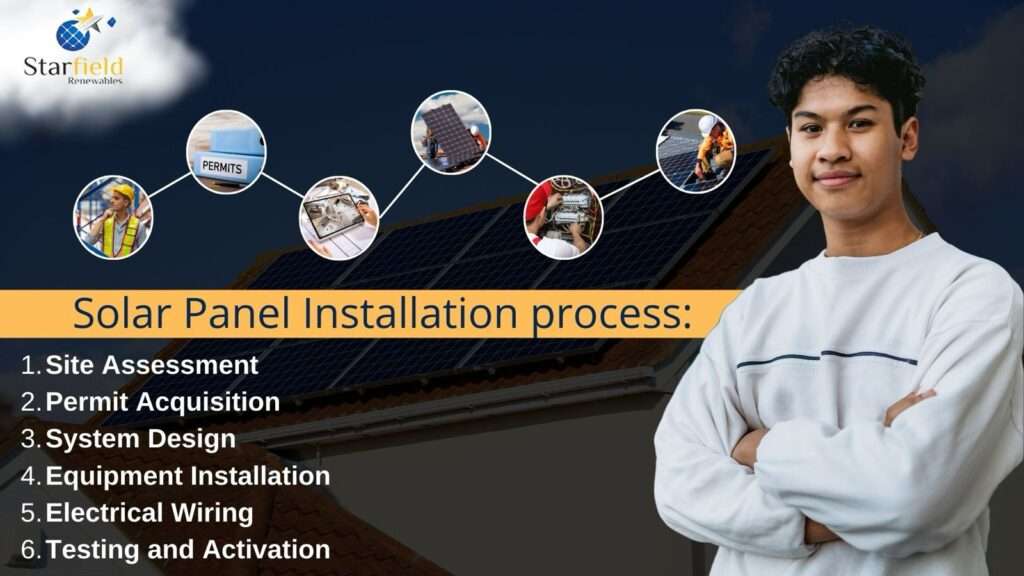
Step 1: Assess Your Home’s Solar Potential
To decide if a home is suitable for installing solar panels, consider factors such as the condition of the roof, the amount of sunlight, shade from buildings or trees, and the angle of the roof. To determine the effectiveness of solar energy, it is important to make sure that the building you want to install solar panels on is compatible with the building’s design, and energy demand.
- Conduct a Roof Evaluation
Certain roofs may not be appropriate for solar panel installations. The size and condition of your roof, together with the direction of your roof (the south must be clear of any high-rise building or tree), are the most important factors. Roofs that face south and have very little shading can be ideal to produce solar energy, but west- and east-facing roofing systems can also be effective. Make sure your roof is in good repair and is capable of supporting the load of solar panels. Additionally, think about possible shade from nearby structures or trees.
- Check Solar Viability in Your Area
Solar energy production varies depending on location. Areas that have a lot of sunlight will naturally produce more energy. It is possible to consult local solar maps or speak to an expert like Starfield Renewables Pvt. Ltd to evaluate the potential solar energy in the area where you live.
- Estimate Your Energy Needs
Before you purchase a solar-powered system, determine your household’s use of electricity. Check your utility bills regularly for a clearer knowledge of how much you consume. This can help you figure out the amount and type of solar panels that you’ll require to satisfy your energy needs.
Step 2: Research Solar Panel Types and Systems
Being aware of the different kinds of solar panels and systems that are grid-tied hybrid, off-grid systems, along with monocrystalline, polycrystalline, and thin-film panels can assist you in making informed choices. The knowledge you gain will help you choose the most suitable solution based on the efficiency as well as cost and demands for the energy requirements of your business or home.
- Monocrystalline vs. Polycrystalline Panels
Monocrystalline panels perform better as well as last for longer however, they tend to be higher priced. Polycrystalline panels are cheaper however they are less efficient. Your choice is based on the budget you have and the amount of roof space available.
- The Role of Inverters
Inverters play an important role in all solar systems. They’re responsible for converting the direct current (DC) generated by solar panels to alternating current (AC) that is later employed to provide power for your home. There are three main kinds of inverters, namely microinverters, string-inverters and power optimizers. Installers like Starfield Renewables. Ltd. can assist with selecting the ideal option for your home’s specific needs.
- Grid-Tied, Off-Grid, or Hybrid Systems
Choose if you’d like grid-tied, off-grid or hybrid solar panels. Grid-tied systems tend to be the most prevalent, permitting users to trade excess power back to the utility provider. Off-grid systems store energy in batteries that can be utilized in times when the sun doesn’t shine thereby allowing you to be independent of the grid. Hybrid energy systems mix the storage of energy along with grid connections.
NOTE: Only the On-Grid System is subsidized by the government.
Step 3: Choose a Reputable Solar Installer
The choice of the best installer is essential for your success with solar panel systems. An experienced installer will ensure the proper plan of installation, safety, as well as optimal efficiency. Choose experienced, accredited experts with a strong reputation for customer satisfaction with competitive pricing as well as post-installation assistance. Installers who are reliable can increase your system’s effectiveness and longevity.
- Check Certifications and Experience
Choose an installer who has been certified by credible organizations such as the National Renewable Energy Laboratory (NREL) or any other certification organization. Experience is essential. Choose a firm that has a track record of success for example, such as Starfield Renewables. Ltd. which is known for high-quality and reliable installation.
- Read Reviews and Get Recommendations
Review and recommendation from clients can help when selecting an installer for solar. Review testimonials of past customers as well as ask family, friends or neighbors who have had solar panels installed for their feedback.
- Get Multiple Quotes
It’s always good to seek estimates from three different installers. Compare rates, warranties and timeframes for installation. Be sure to choose a company with your lowest cost, and consider the standing of the business and the high quality of the equipment they use. Starfield Renewables Pvt. Ltd. provides competitive prices, top-of-the-line customer service and top-quality products.
Step 4: Obtain Permits and Paperwork
Before installing solar panels on your home, you should make sure that the installer has all the permits and that your solar panel installer complies with local laws and building codes. Proper documentation can ensure that your solar panel installation is legally secure. Starfield Renewables. Ltd being the best solar panel company, ensures that all your documents are legally valid first and then proceeds with the work. So that you do not face any problems in the future
- Understanding Local Building Codes
Every state is governed by its own rules and building codes that govern solar panel installation. Although most solar panel installers manage the process of obtaining permits, it’s important to know about any local rules or restrictions.
- Take Advantage of Incentives and Rebates
A lot of governments offer rebates and incentives for solar panels. Find out about federal, state and local programs that could assist in lowering the costs of installation. Starfield Renewables Pvt. Ltd. can help you through this procedure and help you make sure that you are taking advantage of the possible financial incentives.
- Step 5: Installation Day
When the paperwork is done and the paperwork is completed, it’s time to install. The installation process generally takes about 1-3 days, depending on the level of complexity involved in the equipment.
- Delivery and Preparation
In the next few days before installation, all panels, inverters and other equipment needed are delivered to your residence. The installation team will prep the roof, and make sure that your panels are placed in a way that maximizes sunlight.
- Mounting the Panels
The panels are fixed to the roof with brackets that are designed for it. The process involves firmly fixing the panels to your roof and positioning the panels to maximize effectiveness. The installation team at Starfield Renewables Pvt. Ltd. will be sure your panels are correctly aligned to prevent shading and maximize sun exposure.
- Wiring the System
When the panels are installed after installation, they’ll be connected to an inverter before being added to the electrical system. It requires precise electrical wiring (Both DC and AC) to make sure the system operates securely and effectively.
Step 6: Inspection and Grid Connection
The solar panel must be thoroughly tested and checked before it can be used to test its ability to generate electrical power. This is to verify that the system is correctly installed, wired, and functioning properly. Approval may also be required from the area authorities or the utility provider to confirm that the grid complies with regulations and grid guidelines before it can be activated.
- System Inspection
A majority of local authorities need a final inspection to verify that the solar panel complies with MNRE codes and safety guidelines. The inspectors inspect the panel installation, wiring, as well as the overall functionality of the system.
- Connecting to the Grid
After the system has passed inspection the system will then be connected to the grid of your utility (if it is grid tied). The utility provider may also put in a new meter (Net-Meter) that will keep track of the power generated by your system and the surplus power that you transmit into the grid.
Step 7: Monitor and Maintain Your Solar Panels
Solar panels require very little maintenance after installation. However, periodic monitoring is necessary to maintain the highest efficiency. Regularly cleaning the panels to get rid of dirt and dust and checking the system for problems will ensure that the panels continue to produce electricity optimally. A proper monitoring system can identify any problems early and help keep the system in good condition for a long time.
- Monitoring Your System
The majority of solar panels come with monitoring software that allows users to monitor consumption and production of energy. This helps ensure that the system is working as it should and allows you to identify problems early.
- Routine Maintenance
Solar panels require little maintenance. Sometimes, it is necessary to wash the panels in order to eliminate dust and dirt which can decrease effectiveness. Regular inspections conducted by Starfield Renewables. Ltd. can ensure that all is working properly.
- Troubleshooting Issues
If your system doesn’t function in the way you expect, make sure to check for obstructions or shading that could block sunlight. In the event of a major issue, you should contact the installer to get assistance.
Understanding Solar Panels and Their Benefits
Solar panels convert sunlight into electricity, providing a renewable energy source and a variety of benefits. They reduce the cost of electricity and carbon emissions as well as reduce dependence on fossil energy sources. Solar panels require minimal maintenance, are durable, and are suitable for use in a variety of locations, contributing to a greener future.
- Environmental friendliness: Solar power reduces carbon emissions and helps combat climate change.
- Cost savings: Solar panels can significantly lower your electricity bills over time.
- Energy independence: By generating your power, you become less reliant on the grid.
- Property value: Solar panels can increase the value of your home.
Conclusion
Installing solar panels is an investment that is worth the cost and could bring substantial savings in energy costs and a greener future. If you adhere to this step-by-step instruction from Starfield Renewables. Ltd. It is certain that you will have a smooth installation and will provide renewable, green energy for the future.
Disclaimer – If you want to get a subsidy from the government then it is very important for you to know what kind of solar panels are subsidized by the government. But let us tell you that Starfield Company can provide subsidy only on grid solar panel systems.

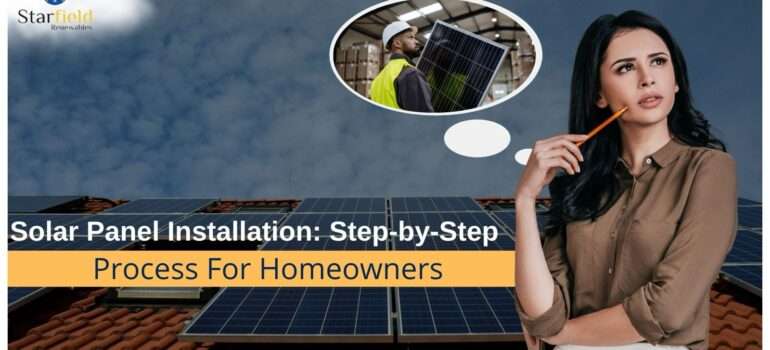

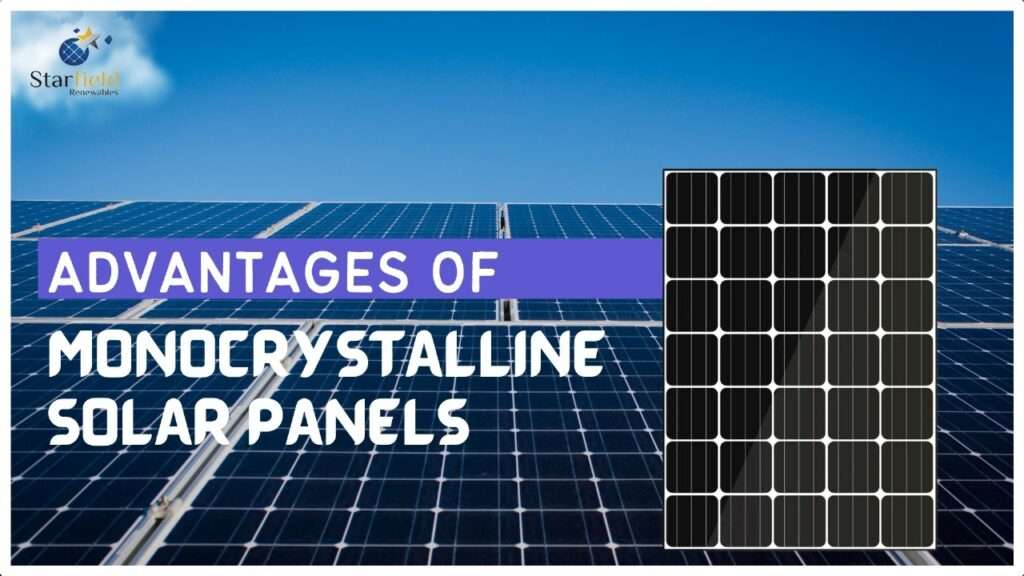
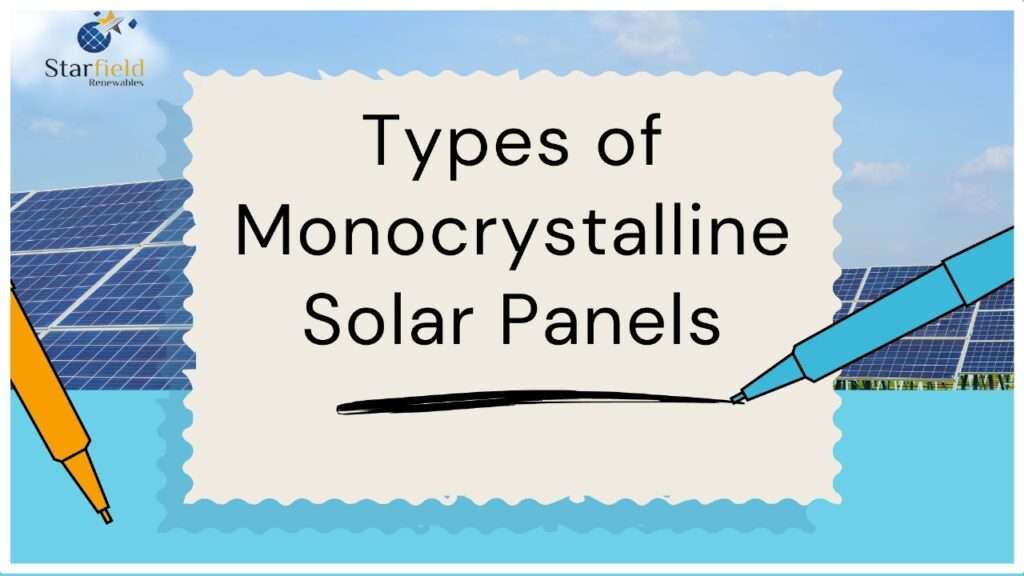


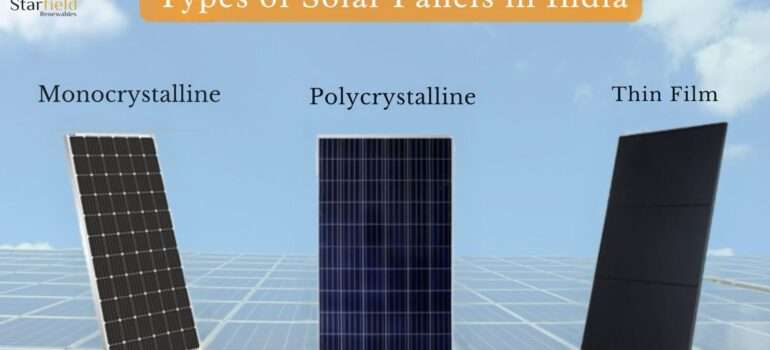



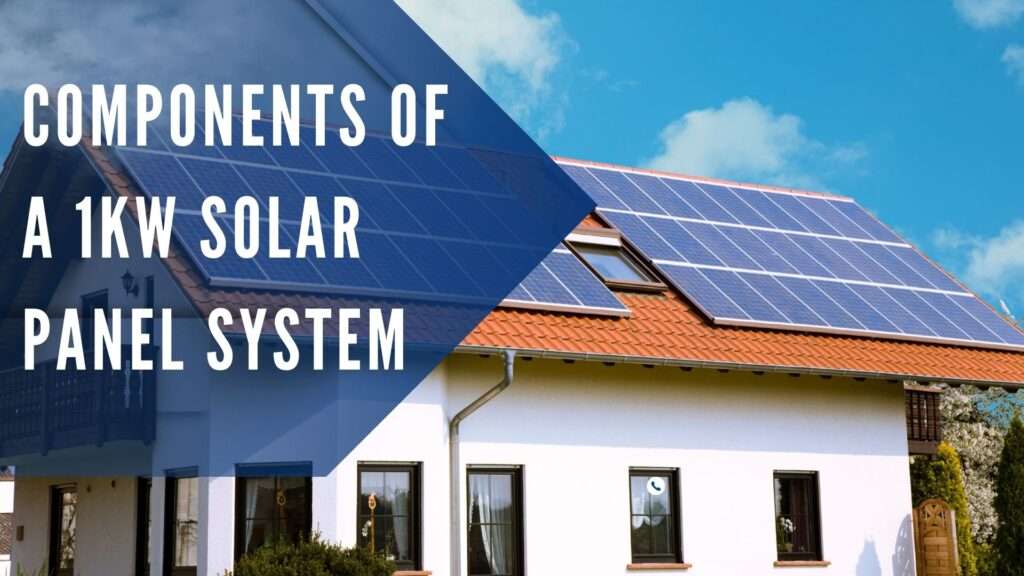



Recent Comments